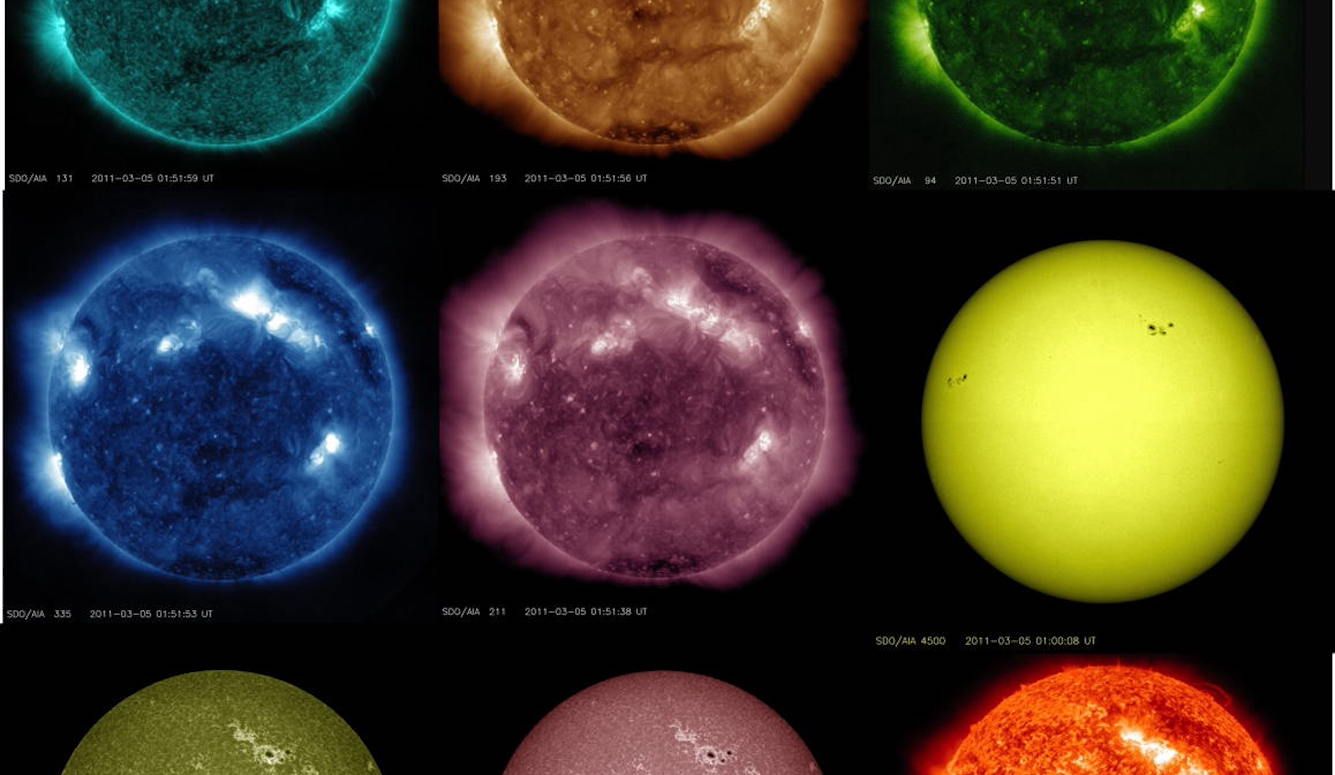Science / Tech
Want to Restore Your Faith in Humanity? Visit a Scientific Conference
Meeting the people who are making this world a better place through science provides a much needed sense of balance.

As laypeople, we often learn about emerging science through the politicized lens of social media—especially when it comes to such issues as global warming, pandemic modelling, vaccines, and biological sex. And so it becomes easy for us to imagine that the everyday world of scientists is constantly afflicted by the same culture-war polarization as our daily Twitter and Facebook feeds.
But, as in many other areas of life, social media distorts our perspective, because it signal boosts the angriest and loudest members of every subculture. In truth, most scientists are engaged in apolitical work, which they conduct beneath the surface of public observation and commentary—as I reminded myself last month, during an informative and inspiring visit to the five-day American Geophysical Union (AGU) Annual Convention in New Orleans.
My own role as a symphonic cellist marks me as what may be the furthest thing from an expert in geophysics (a field that Wikipedia helpfully defines as “a subject of natural science concerned with the physical processes and physical properties of the Earth and its surrounding space environment”). But as a podcaster, I was able to get a press pass. And so while most of my Louisiana Philharmonic Orchestra colleagues got coffee or went home to walk the dog during breaks from our recent rehearsals of Handel’s Messiah, I would stroll over from the (acoustically pristine, I should mention) Orpheum Theatre to the sprawling Ernest N. Morial Convention Center in downtown New Orleans.

This was my first convention experience of any kind since 2004, when, as a high-schooler, I assisted delegates at the Democratic convention in Boston while John Kerry was accepting his party’s presidential nomination. Needless to say, the 2021 AGU meet-up attracted fewer journalists than the Democrats did 18 years ago. Yet it was deeply impressive, reminding me of the power of science, the true engine of human progress.
This event typically attracts about 30,000 scientists, though the 2021 iteration was much smaller because of COVID: There were about 10,000 physical attendees while many more participated virtually. In what was (for me) a stunning coincidence, the keynote speaker was none other than Kerry, whom Joe Biden named a year ago as the first Special Presidential Envoy for Climate. But just about everyone else was a scientist of one kind or another—from undergraduates, grad students, and corporate representatives marketing new products, to Nobel Prize winners and prominent government policy specialists. The cacophony of voices on the convention floor made a nice break from the rigid formality of a symphony. And even if most of the technical talk went right over my head, there was still something welcome about hearing all this earnest scientific babble concerning subjects that have nothing to do with hashtags and internet memes.

In music, we give life to notes on a page, bringing centuries-old compositions into the present. If a performance is successful, it can become an exercise in time travel, as the audience has the feeling that the piece is freshly written and ageless. But among these scientists and their exhibits, I had the feeling that I was being whisked into the future. So many sentences I overheard began with some variant of “Soon, we’re going to be able to…”
A highlight was speaking with Jérôme Benveniste, the affable Senior Advisor to the European Space Agency (ESA), and (I am told) one of the most distinguished scientists in the field of oceanography. Conversing mainly in Italian (Benveniste’s professional home, the Centre for Earth Observation, is based in Frascati, near Rome), he told me all about the orbiting devices that collect data about our planet, this being his area of specialty. (His co-authored papers have titles such as The COASTALT project: Towards an operational use of satellite altimetry in the coastal zone and Estimating Biomass From Sentinel-3 Altimetry Data: A Sensitivity Analysis. The video below helps give a taste of the kind of technology he works with.) His speech became emotional as he spoke of his (probably utopian) dream of having science lead politicians (instead of vice versa) in doing what’s right for our planet, not what is politically expedient.
Another chance encounter brought me into conversation with solar scientist Stephen Kahler of the Battlespace Environment Division at the Space Vehicles Directorate of the Air Force Research Laboratory. While I could only nod vapidly at his poster presentation on The Association of Solar X-ray Flare Decay Times and Peak Temperatures with Coronal Mass Ejections, he brought the conversation down to my level by explaining the importance of this kind of solar science to the real-life decisions that the Air Force makes about sending flying machines into the sky. He struck me as scientist, environmentalist, and US patriot all rolled into one. And it was hard not to be moved by his deep commitment to his work. (As for the magnificent power of Coronal Mass Ejections, or CMEs, just click on the video below.)
Joshua Himmelstein, a PhD candidate in Marine Sciences at the University of North Carolina, deftly guided me through his studies into sediment accumulation rates in marshes along the North Carolina coast. (The formal description of his study area is Localized remote-sensing through drone-derived 3D models and storm-driven changes in barrier island morphology. But, again, there’s a video for those who just want the basics.) When I asked why non-scientists should care about his research (a blunt question I posed to everyone, but not one that many answered as easily and cheerfully), he explained that marshlands are critical in helping to control the erosion of coastlines.
The enthusiasm of these scientists is contagious. And in my few days browsing the AGU meeting, I perused many posters, heard various lectures, held numerous interviews, collected piles of literature, and took endless photos and videos on my iPhone. I was struck by the sheer range of expertise represented in that room—men and women who studied the farthest reaches of space and the deepest interior of our planet. In a polarized world defined by gender, religion, race, political affiliation, sexuality, and all the rest, the AGU conference was (to my observation) blissfully free of all this. The only overt labelling I could see was represented by the colored name-tag lanyards whose function was “to alert others what space we wanted around us, spacing of chairs in the rooms of plenaries and oral sessions.”

It was just by chance that I ended up being at this convention—a friend had suggested I go—and having this revelatory experience. Wouldn’t it be great if more people, journalists in particular, made a point of visiting with distinguished groups of scientists that happened to be convening in their city—even if (perhaps especially if) their scientific work has nothing to do with the daily news cycle?
So much of what we witness online reflects the themes of scandal, conflict, and grievance. Meeting the people who are making this world a better place through science provides a much needed sense of balance. At the very least, it’s nice to have some basis for optimism when every digital voice seems to be counselling doom.






